Have you heard of The Ainu? They are the indigenous people who once lived on Hokkaido, the biggest island located in the north of Japan. Some also resided in areas of Eastern Russia. They have their own unique culture, language, and ways of living. Their population used to be in the hundreds of thousands. However, after world war two, their numbers declined dramatically.
There are certain places in Japan where you can still find native Ainu. One of them is Akanko Ainu Kotan where you can learn about their culture, try their unique cuisine, witness their traditional rituals, and see their heritage houses.
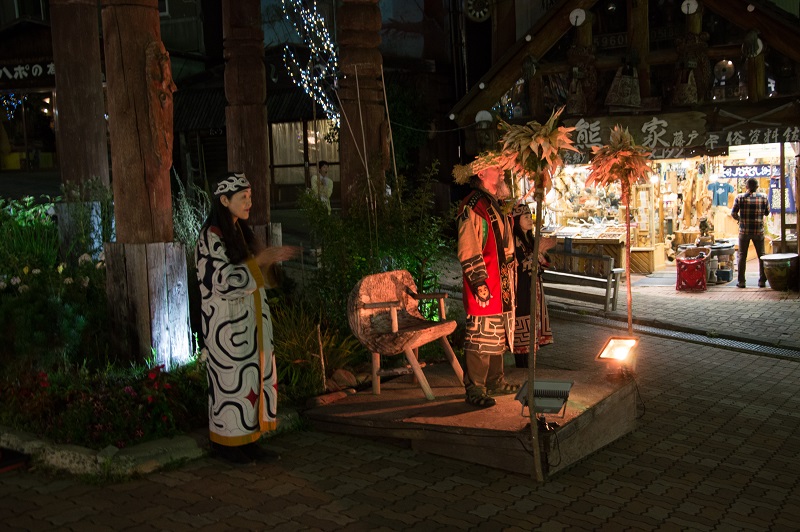
You can be a part of the a thousand torches parade if you visit Akanko Ainu Kotan during September or October.
Table of contents: ()
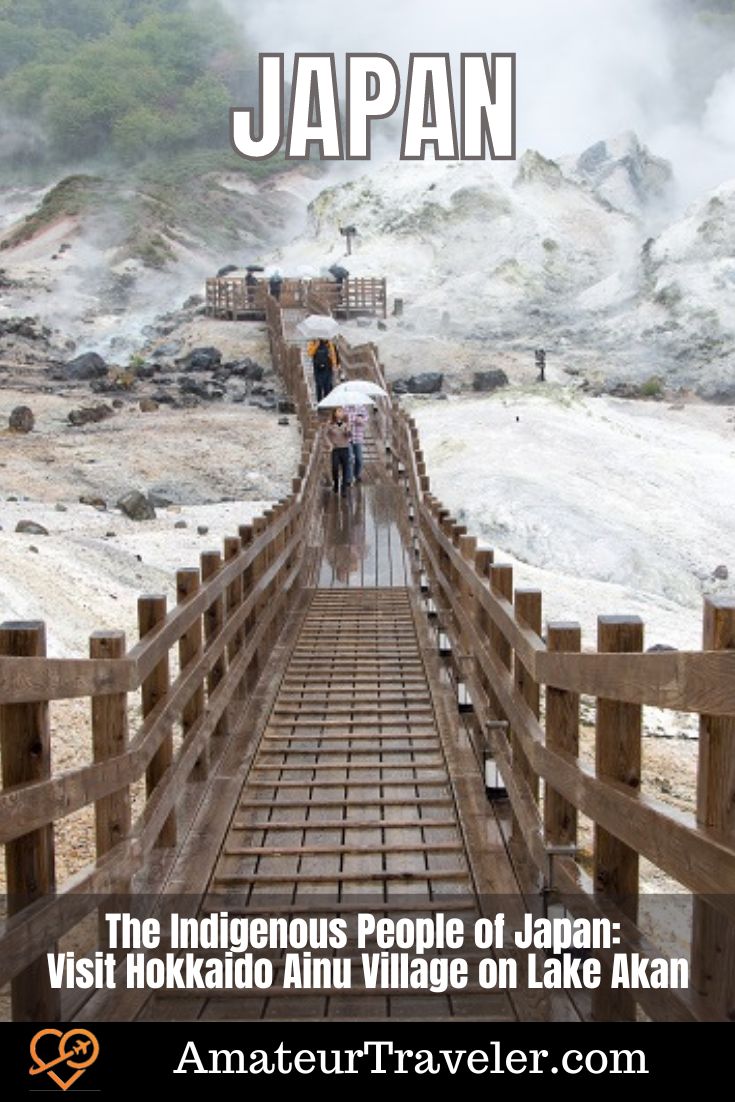
Activities
Akanko Ainu Kotan is one of the biggest settlements of Ainu in Hokkaido. It’s a hot spring town next to Lake Akan and home to hundreds of Ainu people.
There are many things you can do in Akanko Ainu Kotan.
Senbon Taimatsu Festival
The Senbon Taimatsu Festival, or “thousand torches” parade, is an Ainu ritual to express gratitude to the deity of fire. A thousand flaming torches, often made from bundles of bamboo, will be lifted up and carried in a parade led by an Ainu chief and women elders. Traditional music is played as the chief performs a traditional fire ritual in the Ainu language. Some giant torches weighing up to three tonnes each will be carried by dozens of men in the parade. An incredible sight to behold.
You can be a part of the a thousand torches parade if you visit Akanko Ainu Kotan during September or October. If you sign up for the festival in advance, you can take part in the 420-year-old parade. The parade is planned for September and October.
This is the most impressive thing to do in Akanko Ainu Kotan. If you plan to visit, we recommend organizing your trip around this festival. Check the date, time, and weather so you don’t miss out.
Watch a Traditional Dance
In the village of Akanko Ainu Kotan, you will also find the Akanko Ainu Ikor Theater where you can watch traditional dance, listen to Ainu music, and learn more about their fascinating culture through a show called The Lost Kamuy.
Kamuy means god in the Ainu language, Kamuy are similar to the Japanese Kami deities, of which there are millions of gods of flora, fauna, natural phenomena, elements, and everything else on earth.
A ticket for the 30-minute performance will set you back just about 1,500 yen ($12 USD) and is well worth it for the educational experience. While it is a bit of a tourist attraction, it is a crucial way the Ainu can preserve their culture and traditions while generating income for their people.
Marimo Festival
If you have ever been to Hokkaido, you might have noticed shops selling cute round fluffy balls of seaweed algae as souvenirs — either plush toy versions or the real thing suspended in water, sometimes even on a keychain. These balls are called Marimo and they are the latest trend in houseplants in Japan.
The majority of marimo in Japan comes from Lake Akan. Every year between the 8th to 10th of October, there is a three-day festival called Marimo Matsuti. It’s organized by none other than the indigenous Ainu of the region.
Ainu from all over Hokkaido will gather at the lake for the festival. On the second evening, marimo are handed over to the Ainu elders – the Ekashi – on the lake in canoes before a torch procession carries the Marimo to the Ainu Kotan square. The torch precession and traditional dancing is truly a sight to behold. On the third morning, after another ceremony and prayer, the marimo are returned to the elders who row their canoes into Lake Akan to return the algae to its home.

From October 8th to 10th, Ainu from throughout Hokkaido participate in the Marimo Festival in Lake Akan.
Unless you have friends who live nearby or you are an expat already living in Japan, it might be a challenge to join the festival unless you are savvy enough to book a hotel well in advance. It occurs in a small town, for three days only, and hotel rooms are very limited. So plan well if you wish to see this once-in-a-lifetime event.
Taste Ainu Food
In Akanko Ainu Kotan, there are several great restaurants where you can try authentic Ainu cuisine. Ainu dishes are made of mountain vegetables, fish, and some very unique game meat, including bear, horse, and deer. All things are obtained via hunting, fishing, farming, and foraging.

In Hokkaido, there are Ainu restaurants where you can try authentic Ainu food.
Aniu dishes are made in a traditional way to maximize preservation, so the food won’t spoil quickly. This is because Ainu normally live in the mountains where it’s hard to find ingredients during winter because of the heavy daily snow in Hokkaido.
You must dry dishes made with famous kombu kelp, saketoba – dried salmon jerky, unique mountain vegetable soups, fermented fish, and raw horse meat, and much more.
While it might not be the best food you will try in the culinary wonderland of Japan, these dishes display the special Aniu way of living and are a wonderful way to get closer to their culture. Just be brave and try something new! You might be surprised.
Learn Their Traditional Crafts, Music, and Embroidery
If you really want to get into Ainu culture, you can sign up for classes on woodcraft, including how to make their traditional musical instrument, mukkuri, a mouth harp made from a single piece of bamboo that can be amazingly played to produce many interesting sounds from raindrops to animal calls.

There are many places inside the village to learn more about Ainu history and culture.
If you want to learn how to play this traditional instrument, you can sign up for a mukkuri class within the Ainu Kotan settlement to help you understand how it works and how to make different sounds with it.
There’s also an embroidery class that teaches you how to make Ainu traditional embroidery patterns.
These classes are quite short at around 15 to 30 minutes each, so it is unlikely you will master the arts your first time trying, however, it can open you to the world of Ainu and give you special insight into a new culture.
Get Soaked in a Hot Spring
Here in Lake Akan, you can melt away all the stress and aches from your journey while soaking in a hot spring. Lake Akan is located inside Akan-Mashu National Park. It is a volcanic area known for hot springs and crystal clear lakes caused by volcanic eruptions thousands of years ago. Since Lake Akan is a volcanic area, there are many great hot springs here.

Since Lake Akan is a volcanic area, there are many great hot springs here.
There are plenty of hot springs available, most of them are in traditional Japanese onsens – spas where you can spend the day soaking and getting massages. You can enjoy an open-air hot spring, a rooftop hot spring, or an indoor hot spring with a panoramic Lake Akan view.
You will not be short of options, either choose a public bathhouse or onsen for the day or stay in a hotel that has hot springs, some even have them in your private room!
Enjoy the Beauty of Lake Akan
Lake Akan is one of the three large lakes inside Akan-Mashu National Park. It’s known for being the home of marimo. If you missed the marimo festival but still want to see some of the biggest marimo and learn about the cute algae, you can take a boat to the Marimo Exhibition Center. It’s on the small island of Churui in the middle of Lake Akan. The majority of marimos in Japan come from Lake Akan.
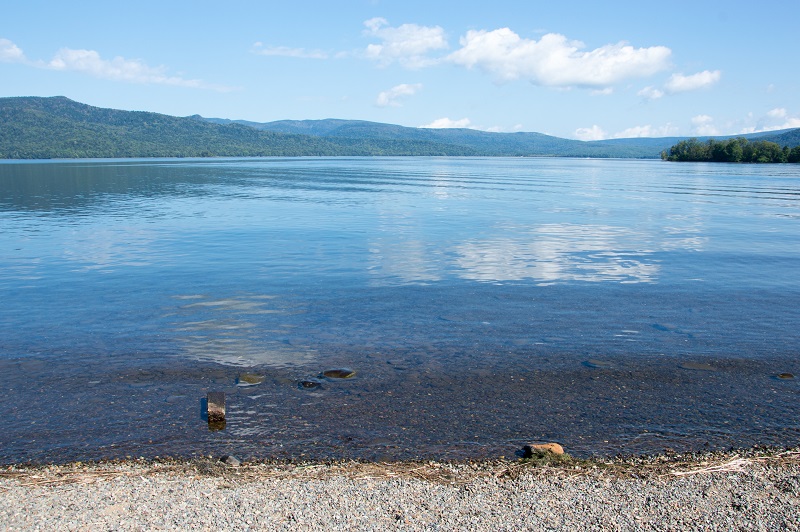
The majority of marimos in Japan come from Lake Akan
Lake Akan is a big lake with clear water. You can enjoy a panoramic view, especially in the morning when the sky is clear. You may see a flock of ducks paddling serenely across the lake.
Lake Akan is also a well-known fishing spot with a variety of fish and is especially famous for its native trout. Fishing is only allowed during the May 1st – October 31st season and in certain areas. Fishing fees also apply. Enthusiasts might want to go with expert guides who provide transportation to fishing spots, boats, and equipment to allow them to enjoy fishing to the fullest.
Trekking
Near Akankohan Eco Museum Center, where you can learn more about Ainu culture and the Lake Akan ecosystem for free, there’s a small path that leads you to a pond of volcanic mud in the middle of the forest. These boiling mud pools are called bokke. The geothermal mud ponds do emit a sulfur smell, but they are a great way to experience the amazing ecosystem of Lake Akan with your own eyes.
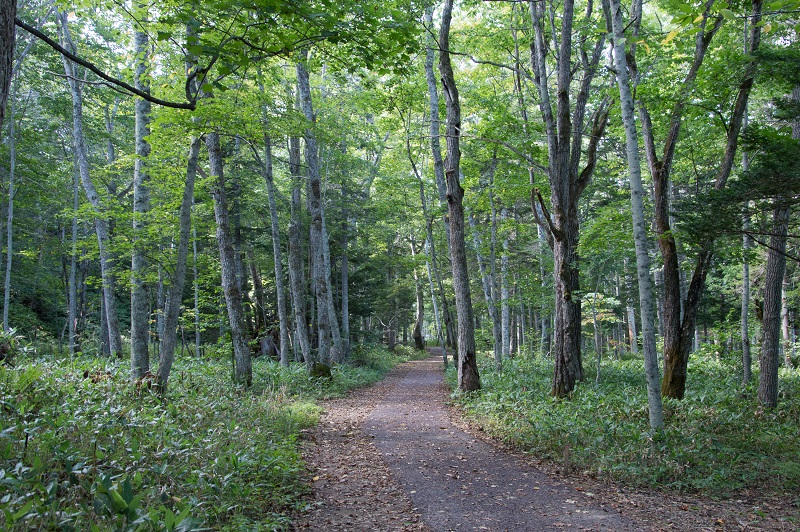
This half-hour trek leads you to a pond of volcanic mud.
If you have a chance to visit Lake Akan, we recommend you make the hike and see this strange landscape for yourself. It’s an easy 30-minute trek that’s suitable for everyone and also very close to the town.
How to Get to Lake Akan
Akanko Ainu Kotan is located next to Lake Akan, in Kuchiro City. It’s in the Eastern part of Hokkaido, which is around 300 kilometers from Sapporo.
The best way to get there is to rent a car. It takes around 4 and a half hours to drive from Sapporo to Akanko Ainu Kotan. It will also allow you to explore nearby attractions that can’t be easily accessed by public transportation.
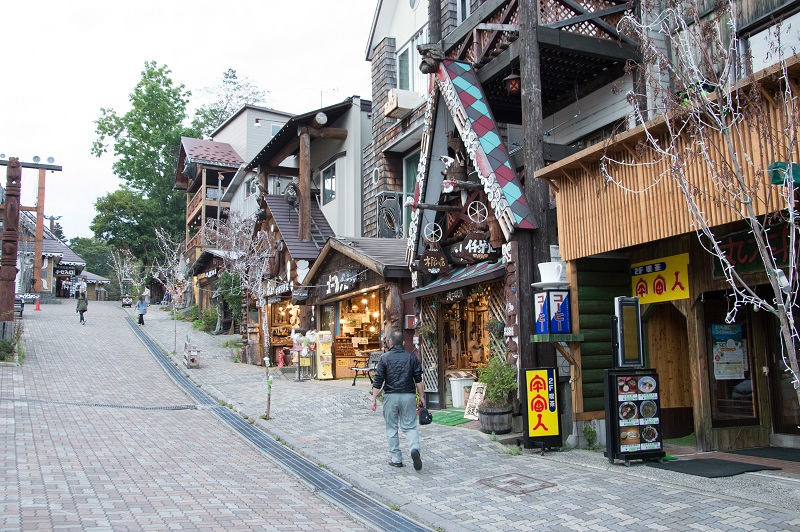
It takes four and a half hours to drive here from Sapporo.
If you want to go by train, the nearest train station to Akanko Ainu Kotan is Kushiro station (5 hours from Sapporo). After that, you need to take a bus for another two and a half hours.
It’s also possible to take a bus from Chuo Bus Sapporo Terminal to Kitami Bus Terminal, and then another bus to Akanko Bus Terminal. The entire trip will take almost 7 hours though, so this might be your last choice.
What’s the Best Time to Go to Lake Akan?
It’s best to come to Akanko Ainu Kotan from September to October to catch the thousand torches parade. If you want to see the marimo festival, you need to come from October 8th to 10th. But at that time, hotels can be expensive and fully booked quickly. So, prepare well.
It’s not recommended to visit between December and March since there will be very limited activities because of the heavy snow. Winter is intense in Hokkaido and many or even all routes might be closed because of snow, so visits could even be impossible.
How Many Days Do I Need at Lake Akan?
One day and a half minimum is generally recommended. It gives you enough time to relax and enjoy things at Akanko Ainu Kotan.
It’s a small place, and it’s possible to see the village on a day trip. But it’s not recommended since you will miss out on some great stuff like the evening Thousand Torches Festival, and laying around relaxing in a hot spring onsen for at least a whole day.
Recommended Route to Lake Akan
Since it’s almost a five-hour drive from Sapporo, it might not be worthwhile if you drive from Sapporo to just visit this Ainu village alone. Make the most of your trip and give it some time.
If your trip is in September or October, on your first day, you can make a stop at Chitose to visit a salmon aquarium and see hundreds of thousands of natural salmon swimming upstream to lay their eggs.
After that, you can go to Obihiro and enjoy a famous Buta Don (grilled pork with rice) before heading all the way to Akanko Ainu Kotan in Lake Akan.
As you are just about to reach Lake Akan, you can visit Onneto Lake, and take a short break to admire the scenery.
After your time at Akanko Ainu Kotan, you can head inside Akan Mashu National Park and visit Lake Mashu, which is one of the clearest lakes in the world.

Don’t forget to stop by Lake Mashu. It’s one of the clearest lakes in the world.
If you have time left, you can go to Lake Kussharo, which is the biggest lake inside this national park, before heading over to Abashiri.
Once there, you can go to the Abashiri Prison Museum, which used to be the toughest prison in Japan because of how harsh it is in winter.
Then, you have two choices between heading further to East Hokkaido by going to Sheiretoko National Park, which is considered the most pristine natural park in Japan or heading back to Sapporo by stopping by Asahikawa, Biei, and Furano along the way.
It’s going to be around a 5-day trip or longer if you decide to go to Sheiretoko National Park.
Preparation
While it sounds like a long trip, it’s quite easy to do. Japan is one of the easiest countries to travel in the world. Road conditions are very good and well-maintained. Navigation systems are great with English signs available throughout the country.
Japanese are also polite drivers, making it pretty easy to drive here. You just need to be careful of the speed limit.
To prepare for your trip, you need to get an International Driver’s License before coming to Japan. Without it, you won’t be able to rent a car. In addition, your rental car comes with an ETC card. This can save you tons of money when taking tollways, which is highly recommended on this route.
If you don’t know Japanese, you should download Google Translate with the Japanese language pack on your phone. This allows you to translate Japanese even when offline. It’s a convenient way to help you communicate with locals and read menus. In this part of Hokkaido, you might only come across a handful of people who can speak English. If you are interested in learning the language, check out my article on how to learn Japanese for beginners.
Depending on the time of year you go, you might want to book a hotel in advance. All of the places mentioned in this article are in quite small towns with limited accommodation options.
Other Options
If you don’t have enough time to visit Akanko Ainu Kotan in Lake Akan and still want to explore Ainu culture, there are other options available.
First, there’s a Sapporo Ainu Culture Promotion Center. It’s only an hour away from Sapporo city center. There, you can see Ainu traditional houses and learn about Ainu culture, music, and food.
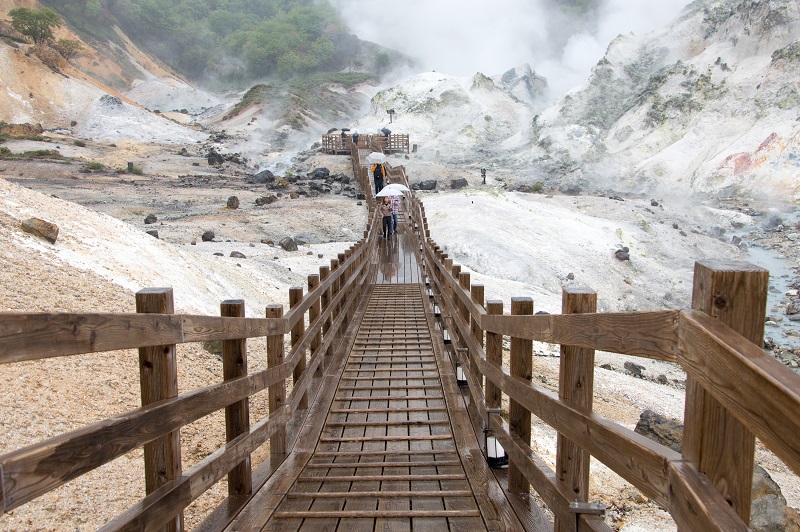
If you plan to go to Upopoy National Ainu Museum and Park, you should also stop by Noboribetsu, or “Hell Valley”.
If you want a more hands-on experience, you can visit Upopoy National Ainu Museum and Park. It’s a new outdoor Ainu museum in Shiraoi that was just recently opened in 2020.
If you plan to go to Upopoy National Ainu Museum and Park, you should also stop by Noboribetsu, or “Hell Valley”.
The museum is only around two hours away from Sapporo. It’s also easy to come here since the museum is just next to Shiraoi Station. You can also visit it before flying home since it’s only an hour away from Chitose International Airport. Please note that this museum is quite big. It might take two full days to enjoy everything there. And you should avoid going there during summer (July and August) because of the heat.
Alternatively, you can visit Nibutani Ainu Culture Museum in Biratori.
If you really don’t have time, at the very least, take a photo with the Ainu statue right inside the Sapporo Station and enjoy Ainu cuisine in Susukino.
Conclusion
When you go to Akanko Ainu Kotan, there’s much more to see than watching performances and buying souvenirs. You can have hands-on experiences with Ainu crafts and music, you can taste real Ainu cuisine, and you can get to know more about the Ainu people and their ways of life.
At the same time, you can enjoy the beautiful scenery Hokkaido has to offer from crystal clear lakes to hot springs and forests.
Oh, and let’s not forget that Hokkaido is known as the kitchen of Japan! Almost 15% of the total agricultural products in Japan come from this province alone. The food here is very fresh and tasty. It’s not just about the famous milk and seafood. It’s about everything. It is guaranteed that the best meals you will have in Japan will be in beautiful Hokkaido. Enjoy!
Author Bio
Saran Lhawpongsawad is an amateur traveler from Bangkok, Thailand. He loves to travel the world and experience different cultures. Right now, he is running a blog that helps expats worldwide relocating abroad called ExpatDen

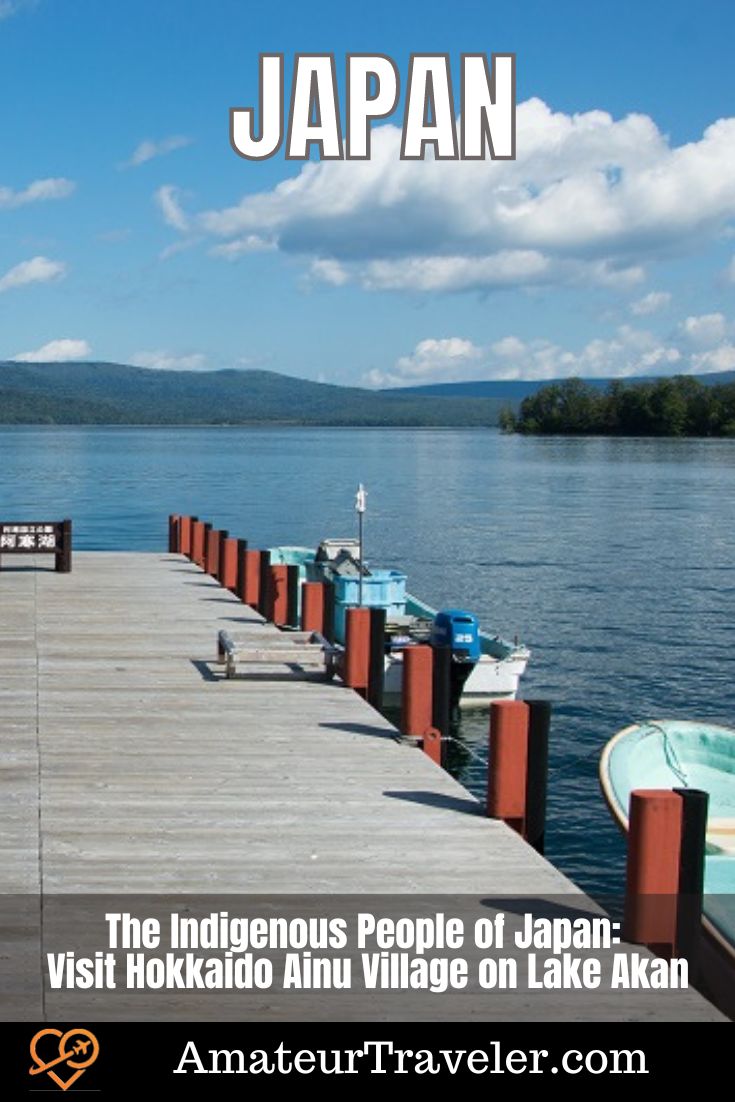
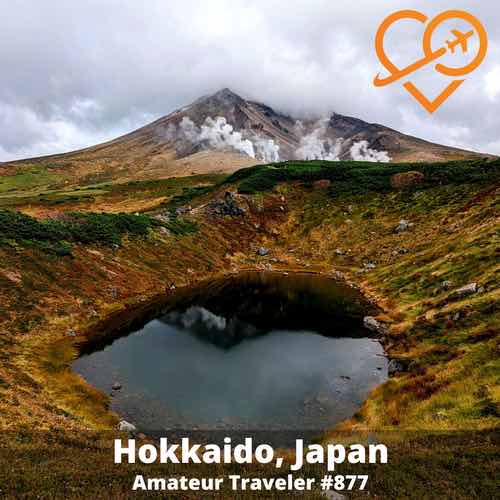 Travel to the Island of Hokkaido in Japan – Episode 877
Travel to the Island of Hokkaido in Japan – Episode 877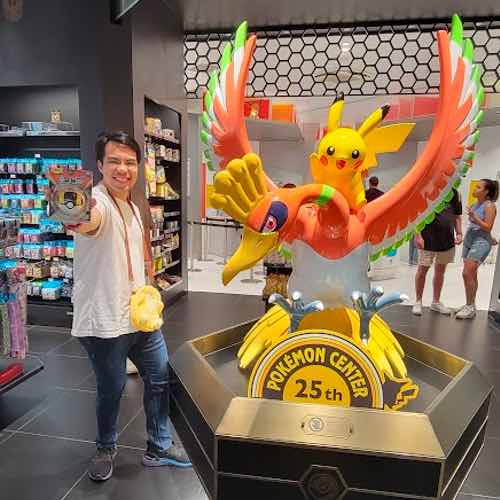 Japan Anime Tour: 7 Must-Visit Destinations for Every Otaku
Japan Anime Tour: 7 Must-Visit Destinations for Every Otaku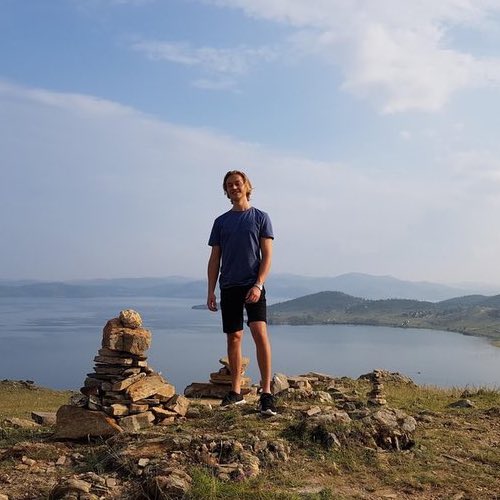 Lake Baikal Travel Guide – Russia’s Largest Lake
Lake Baikal Travel Guide – Russia’s Largest Lake Japan Vending Machines
Japan Vending Machines
